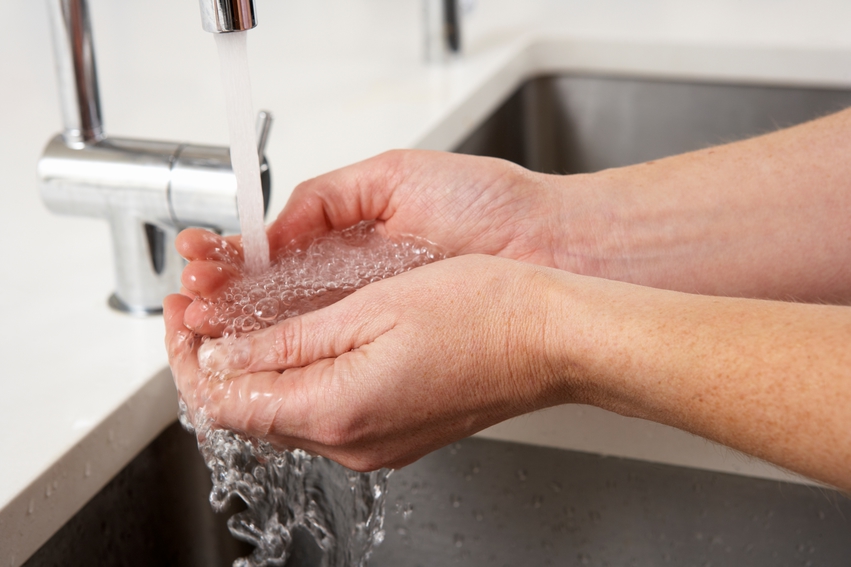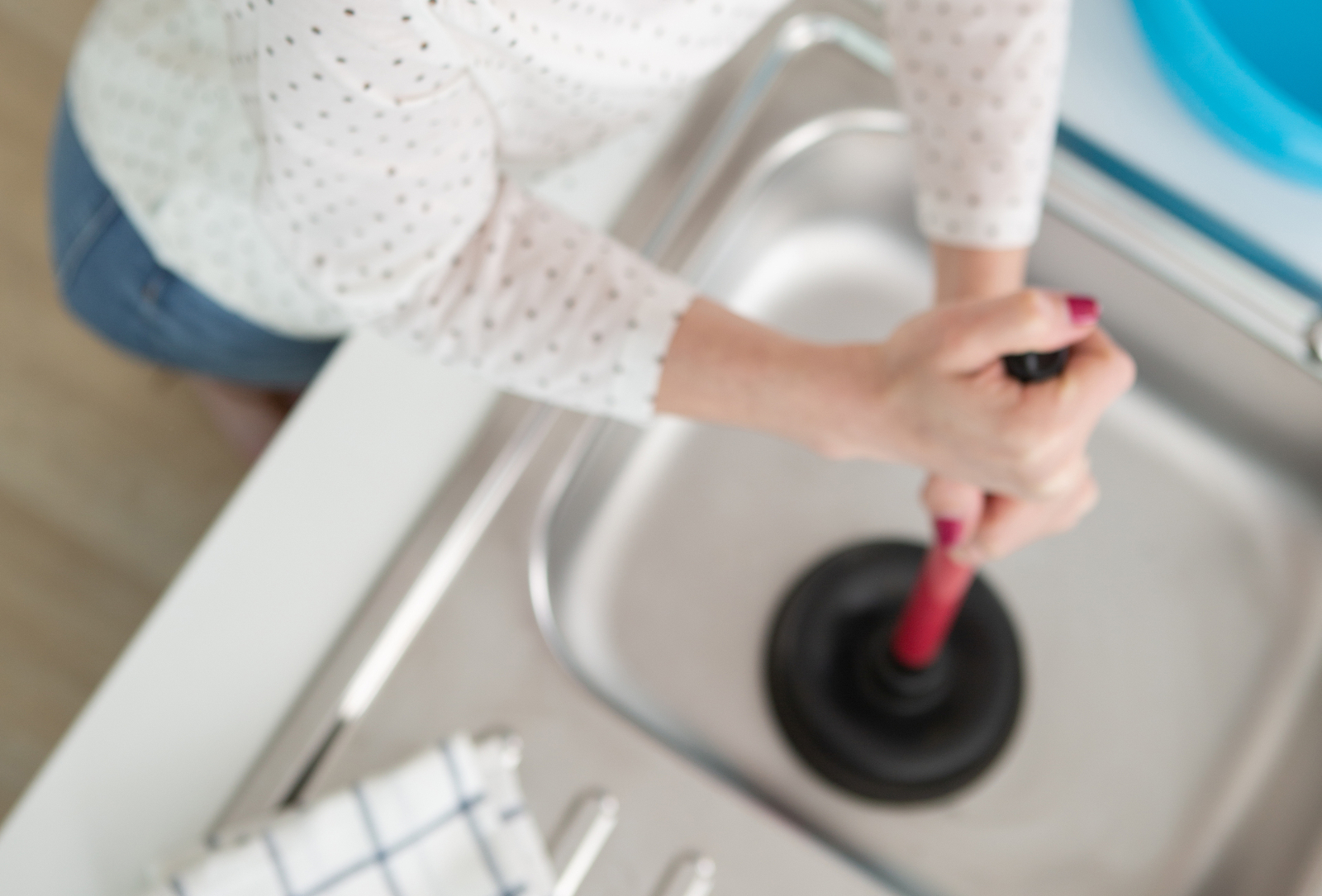Your Guide to Healthy Plumbing: Preventative Care, Tips, and Inspections
(Updated July 2024) – From preventative care to plumbing tips and professional inspections, there are several ways to ensure healthy plumbing. In this guide, we’ll explore the importance of regular plumbing maintenance, common signs of plumbing issues, and the benefits of professional inspections.
 You use your kitchen and bathroom sinks and shower every day without thinking too much about it. However, the type of pipes used in your home, as well as their age and the types of repairs that have been performed on them in the past all contribute to the safety of your cleaning and drinking water and the health of your family.
You use your kitchen and bathroom sinks and shower every day without thinking too much about it. However, the type of pipes used in your home, as well as their age and the types of repairs that have been performed on them in the past all contribute to the safety of your cleaning and drinking water and the health of your family.
Whether you’re a seasoned homeowner or new to the world of plumbing, this post will provide valuable insights to keep your plumbing system running smoothly. Maintaining your plumbing system doesn’t have to be complicated.
How can I maintain my plumbing system to prevent issues?
Here are some simple yet effective tips to prevent issues and keep your plumbing in top condition:
- Regularly check for leaks: Inspect faucets, pipes, and fixtures for any signs of leaks or dripping water. Repair any leaks promptly to prevent water damage and wastage.
- Avoid clogs: Use drain covers or strainers to catch hair, food particles, and other debris. Avoid pouring grease, oil, or coffee grounds down the drain, as they can cause clogs.
- Monitor water pressure: Keep an eye on your water pressure and look out for any sudden changes, which could indicate a plumbing issue. High water pressure can put strain on your pipes and lead to leaks or bursts.
- Insulate exposed pipes: Protect your pipes from freezing temperatures by insulating them, especially in colder climates. Frozen pipes can burst and cause extensive damage to your home.
- Schedule routine maintenance: Consider scheduling annual plumbing maintenance checks with a professional plumber to identify and address any potential issues before they escalate.
Why is regular plumbing maintenance important?
Regular plumbing maintenance is essential for several reasons:
Prevents costly repairs
By identifying and addressing minor issues early on, you can prevent them from turning into costly repairs down the line. Routine maintenance helps extend the lifespan of your plumbing system and its components.
Preserves water quality
Regular maintenance helps ensure that your water supply remains clean and free from contaminants. Cleaning and flushing your pipes regularly can remove sediment buildup and improve water quality.
Promotes water efficiency
A well-maintained plumbing system is more efficient, leading to lower water bills and reduced water wastage. Fixing leaks and repairing faulty fixtures can help conserve water and reduce your environmental footprint.
Maintains home value
A properly maintained plumbing system adds value to your home and enhances its resale potential. Buyers are more likely to be attracted to homes with well-maintained plumbing systems, reducing the likelihood of negotiations or price reductions.
What are the signs of a plumbing problem that needs immediate attention?
 Certain signs indicate a plumbing problem that requires immediate attention. Signs of plumbing gone bad are many and varied. Some red flags to watch out for include:
Certain signs indicate a plumbing problem that requires immediate attention. Signs of plumbing gone bad are many and varied. Some red flags to watch out for include:
Brown or discolored water
If you see grimy-looking water pouring out of your faucets, your water heater may be reaching its sunset years and need replacing. If the water is red, your pipes may need to be replaced. Red-tinted water indicates the leaking of iron from rusted galvanized pipes, common in older homes built before 1980. Repeat: don’t drink; call your plumber.
Slow drain
A drain that empties slowly indicates a blocked pipe. While commercial drain cleaners will correct the problem temporarily, consistent use of Drain-o and other chemicals can have the opposite effect, damaging the pipes and promoting return clogs within weeks. Your best practice is to use a plumber’s snake to break up and dislodge any pipe blockages. Don’t have a snake? Call Meticulous to get the job done in minutes.
Gurgling drains
No, there isn’t a sea monster rumbling around in your kitchen sink drain (at least we hope not!). Strange sounds in your plumbing can indicate a blockage deep inside the pipe that is trapping air. The sound should stop once the blockage is removed, so use your plumbing snake to dislodge the clog or call your plumber for assistance.
Your toilet frequently backs up
This is nightmare territory! However, overflowing toilet syndrome can be corrected by emptying your septic tank or removing pipe obstructions, such as tree roots. Warning: don’t DIY. Call in professionals to get these down-and-dirty tasks done right.
Your faucets are screeching
If your faucet makes a racket when you turn it on, your pipes could be full of air. If your pipes’ “bleed-off” system is not working properly, it can produce a high pitch sound. Plumbing experts can work to eliminate this issue.
Low water pressure
Is shower pressure not what it used to be? Clogged pipes, hidden leaks, or incorrectly sized pipes that cannot provide sufficient water pressure are all fixable causes of this frustrating – and common – plumbing problem.
Frequently Asked Questions (FAQs) About Healthy Plumbing
How often should I schedule plumbing inspections?
We recommend scheduling annual plumbing inspections to ensure your system remains in good condition.
Can I perform plumbing maintenance tasks myself?
While some maintenance tasks can be DIY-friendly, it’s best to leave complex repairs and inspections to trained professionals.
What should I do if I notice a plumbing issue between inspections?
If you notice any signs of a plumbing problem, such as leaks or strange odors, contact a plumber immediately for an assessment.
Are there any preventative measures I can take to avoid plumbing issues?
Yes, regularly checking for leaks, avoiding putting grease down the drain, and insulating exposed pipes can help prevent plumbing problems.
How can I find a reliable plumbing service provider?
Ask for recommendations from friends and family, read online reviews, and verify credentials and licenses before hiring a plumber.
Plumbing issues that make your water unusable and promote an odorous kitchen or bathroom can create health concerns for you and your family if not treated immediately. Call Meticulous if any of these signs and symptoms arise. You’ll be glad you did!


